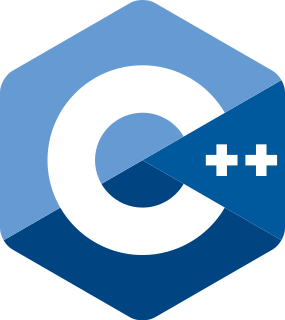Microsoft announced Chromeffects as an add-on for Windows 98 to play 3D graphics and video through a web browser or in separate player software, for ads with flashing text and other animation, or to generate user interface enhancements for Web-based applications. [1]

Microsoft Corporation is an American multinational technology company with headquarters in Redmond, Washington. It develops, manufactures, licenses, supports and sells computer software, consumer electronics, personal computers, and related services. Its best known software products are the Microsoft Windows line of operating systems, the Microsoft Office suite, and the Internet Explorer and Edge Web browsers. Its flagship hardware products are the Xbox video game consoles and the Microsoft Surface lineup of touchscreen personal computers. As of 2016, it is the world's largest software maker by revenue, and one of the world's most valuable companies. The word "Microsoft" is a portmanteau of "microcomputer" and "software". Microsoft is ranked No. 30 in the 2018 Fortune 500 rankings of the largest United States corporations by total revenue.

Windows 98 is a graphical operating system developed by Microsoft as part of its Windows 9x family of operating systems. It is the successor to Windows 95, and was released to manufacturing on May 15, 1998, and to retail on June 25, 1998. Like its predecessor, Windows 98 is a hybrid 16-bit and 32-bit monolithic product with the boot stage based on MS-DOS. The startup sound for Windows 98 was composed by Microsoft sound engineer Ken Kato, who considered it to be a "tough act to follow".

A web browser is a software application for accessing information on the World Wide Web. Each individual web page, image, and video is identified by a distinct Uniform Resource Locator (URL), enabling browsers to retrieve these resources from a web server and display them on a user's device.
Chromeffects promised to deliver complex multimedia over low-bandwidth connections. Using HTML, XML, C++, VBScript, and Jscript, developers would turn a web browser into a rippling, 3D space with audio and video playback. Later versions of Chromeffects were planned to have the ability to be used for representing databases in 3D. [2] [3]

Hypertext Markup Language (HTML) is the standard markup language for documents designed to be displayed in a web browser. It can be assisted by technologies such as Cascading Style Sheets (CSS) and scripting languages such as JavaScript.

Extensible Markup Language (XML) is a markup language that defines a set of rules for encoding documents in a format that is both human-readable and machine-readable. The W3C's XML 1.0 Specification and several other related specifications—all of them free open standards—define XML.

C++ is a general-purpose programming language created by Bjarne Stroustrup as an extension of the C programming language, or "C with Classes". The language has expanded significantly over time, and modern C++ has object-oriented, generic, and functional features in addition to facilities for low-level memory manipulation. It is almost always implemented as a compiled language, and many vendors provide C++ compilers, including the Free Software Foundation, LLVM, Microsoft, Intel, and IBM, so it is available on many platforms.
A MacWeek article from August 1998 quoted David Card, an analyst at Jupiter Communications as saying, "Chromeffects is cool software, and it's not often I say Microsoft has cool software. Apple doesn't have anything comparable". [2] [3] [4]

David Edward Card is a Canadian labour economist and Professor of Economics at the University of California, Berkeley.
Chromeffects had problems with its business model, it was not intended to be a freely distributed technology, rather OEM PC manufacturers or other commercial entities would license the technology to provide to their customers as an IE add-on. However, despite a hard marketing push in mid-1998, OEM interests never materialized and Microsoft canceled the project as part of a major internal reorganization in November 1998. [5] [6] The different components of Chromeffects were separated and integrated into other Microsoft products, such as DirectAnimation in Internet Explorer. [7]
Internet Explorer was a series of graphical web browsers developed by Microsoft and included in the Microsoft Windows line of operating systems, starting in 1995. It was first released as part of the add-on package Plus! for Windows 95 that year. Later versions were available as free downloads, or in service packs, and included in the original equipment manufacturer (OEM) service releases of Windows 95 and later versions of Windows. The browser is discontinued, but still maintained.
The Microsoft Liquid Motion technology used Chromeffects "under the hood".
Microsoft Liquid Motion was a product from Microsoft to create Java animations. It was based on technology acquired from Dimension-X. A beta was released in 1998, and version 1.0 was released soon thereafter to compete with Macromedia Flash. The product was eventually discontinued by Microsoft in 2000 due to lack of popularity. Since Liquid Motion created Java-based animations, they were cross-platform and browser-independent.
A similar newer modern initiative by Microsoft is Silverlight. [3]

Microsoft Silverlight is a deprecated application framework for writing and running rich Internet applications, similar to Adobe Flash. A plugin for Silverlight is still available for some browsers. While early versions of Silverlight focused on streaming media, later versions supported multimedia, graphics, and animation and game developers support for CLI languages and development tools. Silverlight was also one of the two application development platforms for Windows Phone, but web pages that use Silverlight did not run on the Windows Phone or Windows Mobile versions of Internet Explorer, as there was no Silverlight plugin for Internet Explorer on those platforms.






